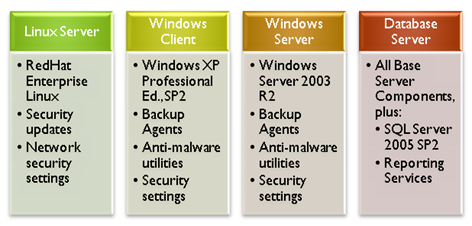This article was first published on SearchServerVirtualization.TechTarget.com.
Many organizations have turned to virtualization to help reduce the number of servers and other computer that they support in their environments. The problem itself has often been referred to as “server sprawl”. The cause of this phenomenon is often the excessive deployment of new physical machines. Often, systems administrators would deploy a new computer just to support a lightweight web application or a simple workload that could easily have been placed on another server. In other cases, the proliferation was unavoidable, as some applications and services just don’t behave nicely with others on the same machine.
Virtualization technology can help resolve the latter problem by allowing multiple independent workloads to run on the same computer at the same time. The process of deploying a new VM can be performed in a matter of minutes, thereby reducing costs and administrative effort. Unfortunately, these benefits can lead to a new problem: “VM sprawl”. IT organizations often find themselves tasked with keeping track of dozens or hundreds of new VMs seemingly overnight. When considering security, performance, reliability, and adhering to IT standards, the task of managing virtual systems can quickly become overwhelming. Fortunately, there are some ways to reduce some of the headaches. In this tip, I’ll present some best practices that can help.
Virtual Machine Deployment
The first step in managing VM sprawl is related to reign in the deployment of new VMs. Just because end-users and systems administrators have the ability to deploy new virtual machines does not necessarily mean that they should do so. IT departments should define a process for the deployment of a new VM. Figure 1 provides a basic example of some typical steps. Often, the suggestion of a process conjures up an image of a small army of pointy-haired bosses creating a new bureaucracy. In reality, it’s certainly possible to perform all of the steps in a process such as this in a matter of minutes.
Figure 1: Possible steps in a VM deployment process.
Best Practice: IT departments should remain involved in all virtual machine deployments.
Configuration Management
Another problem related to the widespread deployment of VMs is a lack of configuration consistency. Since users can choose from a wide array of operating systems and applications to run within a VM, the number of variations can grow exponentially. Additionally, the VMs that are deployed may not adhere to IT standards and guidelines for security and other settings.
One way to minimize these effects is for IT organizations to create a standardized set of base images in what is often referred to as a VM library. Users should be required to begin the creation of a new VM using one of these images. Figure 2 provides some examples of types of VM images that might be created.
Figure 2: Examples of virtual machine images that might be available in a VM library.
While developing a list of standard configurations can help reduce the number of configurations that are supported, IT staff should still remember the need to verify configurations before deployment into a production environment.
Best Practice: All users and systems administrators should base their deployments on IT-approved base images and supported configurations.
Keeping VMs Up-to-Date
An important concern for all deployments – both physical and virtual – is keeping systems up-to-date. Security patches and application upgrades can help minimize the risk of reliability and data loss. The good news is that IT organizations can depend on their standard patch and update deployment tools for managing virtual machines. Of course, this will only be possible if the guest OS is supported by those tools (another good reason for implementing configuration management).
Best Practice: Treat productions VMs as if they were physical machines, and ensure that they are monitored and updated regularly.
Contain Yourself (and your VMs)!
If you’re responsible for limiting VM sprawl in your environment, you know that it’s important to give users what they want. Reducing deployment times and providing access to virtualization functionality can positively impact productivity while minimizing data center impacts. By keeping IT departments involved in deployment decisions, and making sure that VMs are properly managed, organizations can enjoy these benefits without suffering from unmitigated VM sprawl.




